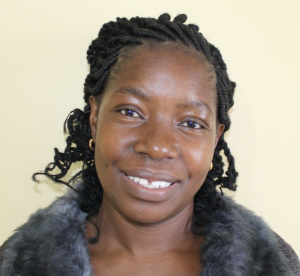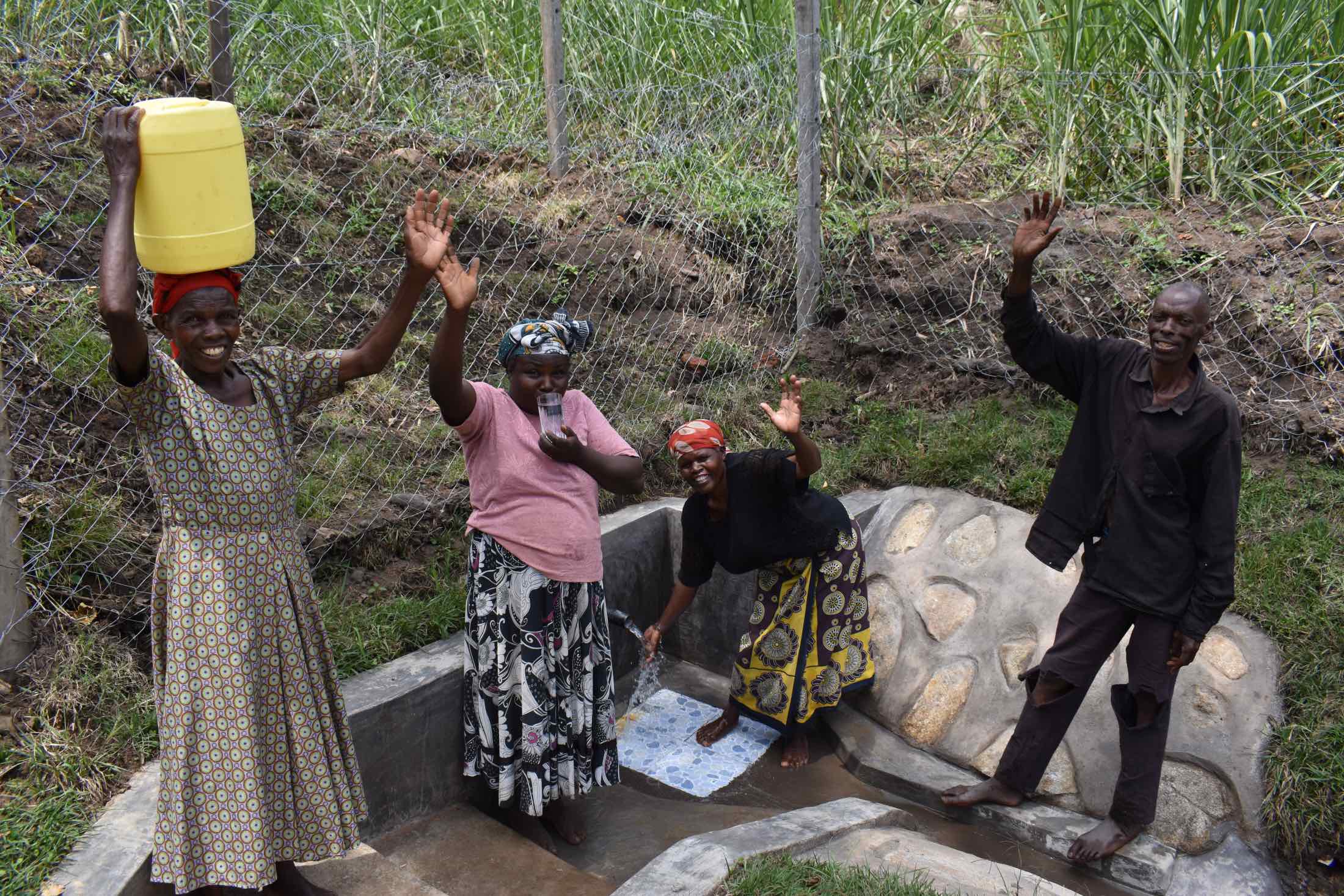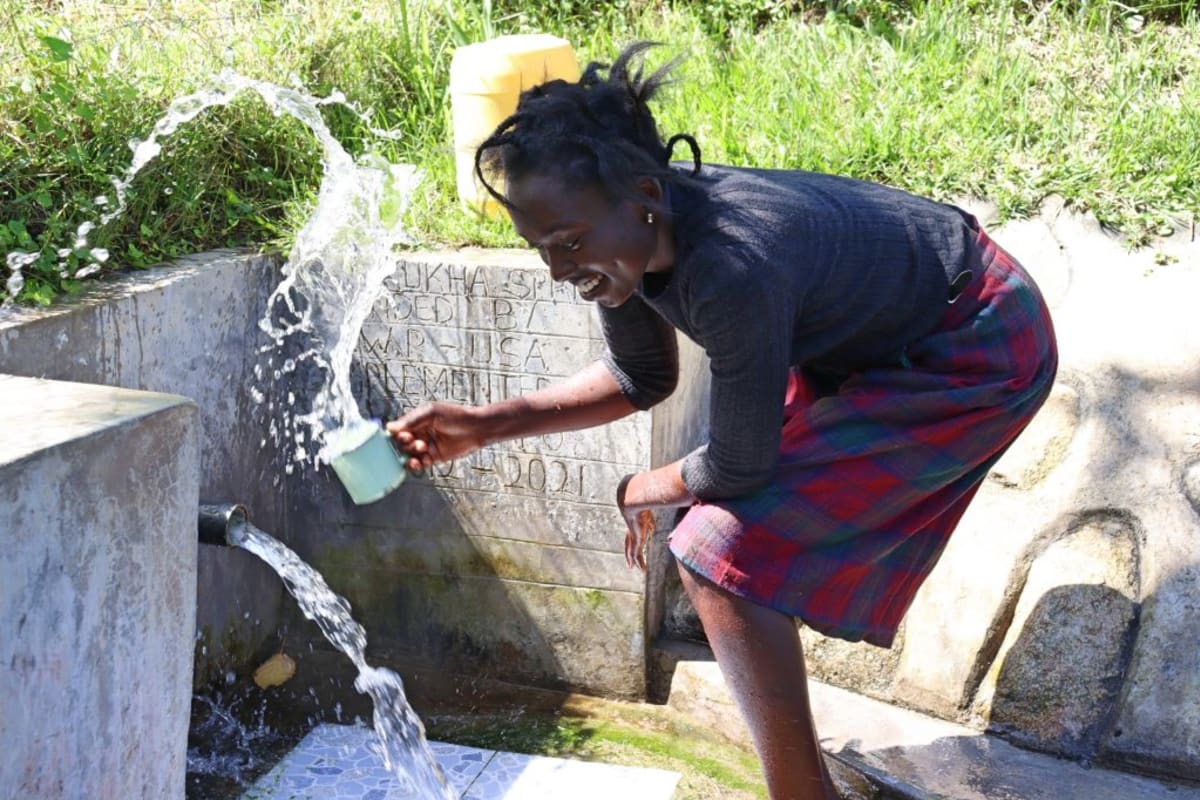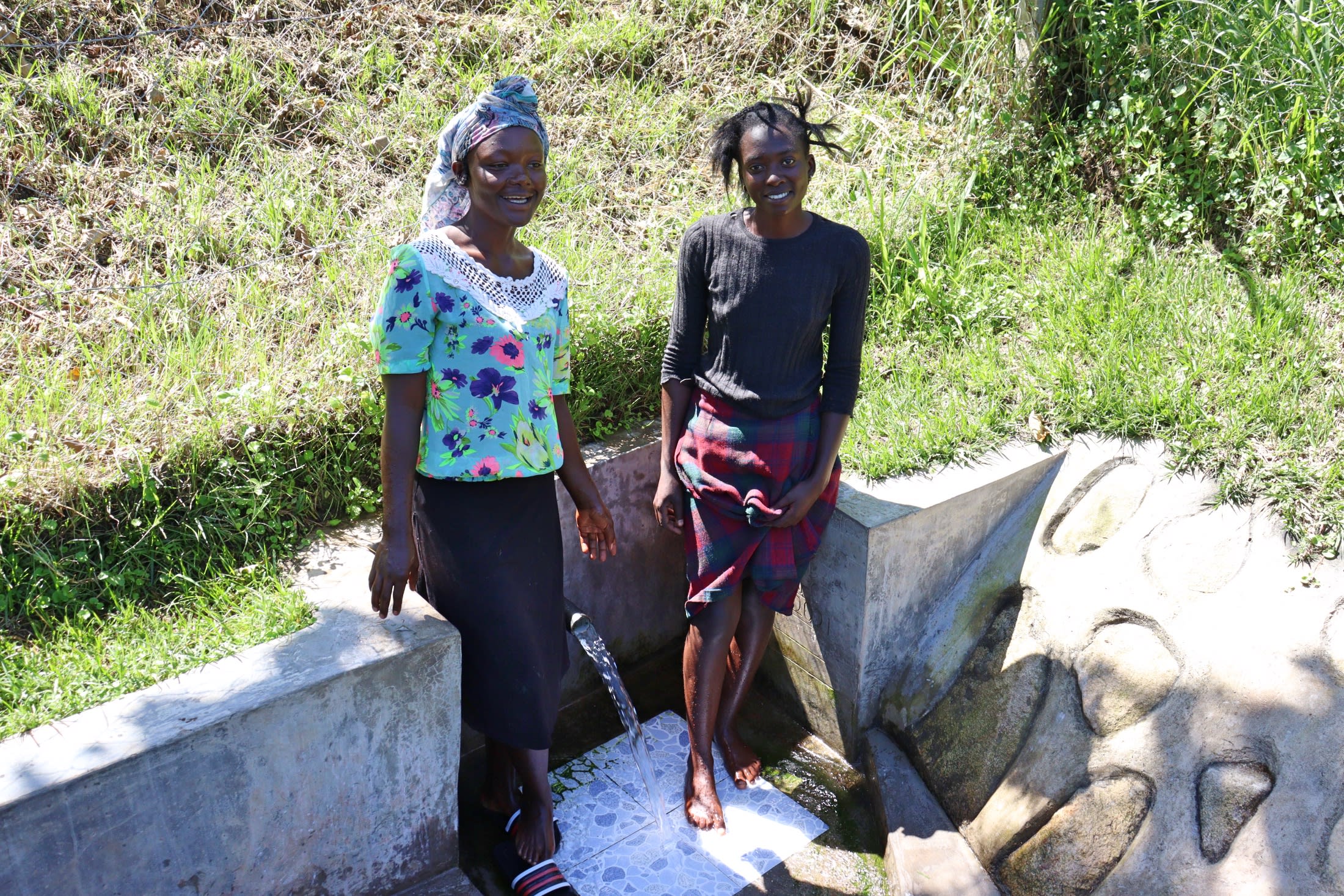"This water point serves many people, yet the water is contaminated and unsafe for drinking. People fall sick frequently due to typhoid and diarrhea," said Joyna Wakukha, a farmer in Bukhakunga who depends on Wakukha Spring for water.
Joyna is 1 of 130 people here who depend on this water source, but her statement says it all: the water is unsafe.
In its unprotected state, Wakukha Spring amounts to no more than a large puddle with a muddy bottom and small rocky drawing point for people to stand on. Animals walk straight through the water, drinking from it and depositing waste around it. Children often dip their hands in to drink directly from the source before filling up their containers to head home. Dirt, farm chemicals, animal waste, and algae are the main contaminants in this water source.
The more people who draw water back to back, the more mud gets churned up into the water. This causes most people to try to fetch as early as possible each morning, but inevitably there is always someone before you in line. To fetch water, people must submerge their container in the pool of water, adding any dirt, bacteria, and germs on their jerrycans and hands directly into the water.
Drinking unsafe water leads to a high rate of waterborne diseases among community members, as Joyna said. When they or members of their families get sick, adults have to spend resources on medical treatment that were supposed to go toward their businesses, farms, or their children's school fees. And when they are sick, adults miss productive time at home and at work, and children miss out on school. Dirty water from Wakukha Spring is holding everyone back from reaching their full potential.
"I miss school frequently because of stomach upsets caused by drinking dirty water from the spring," said primary school student Abraham.
The spring's landowner Mr. Michael Wakukha said that there was a time when community members had gathered locally available materials for protecting their spring after someone else promised they were going to lead the work. But after the community's efforts getting ready, the person never showed up. Community members are now hopeful and happy that their spring really will be protected without any conditions.
What We Can Do:
Spring Protection
Protecting the spring will help provide access to cleaner and safer water and reduce the time people have to spend to fetch it. Construction will keep surface runoff and other contaminants out of the water. With the community’s high involvement in the process, there should be a good sense of responsibility and ownership for the new clean water source.
Fetching water is a task predominantly carried out by women and young girls. Protecting the spring and offering training and support will, therefore, help empower the female members of the community by freeing up more of their time and energy to engage and invest in income-generating activities and their education.
Training on Health, Hygiene, COVID-19, and More
To hold trainings during the pandemic, we work closely with both community leaders and the local government to approve small groups to attend training. We ask community leaders to invite a select yet representative group of people to attend training who will then act as ambassadors to the rest of the community to share what they learn. We also communicate our expectations of physical distancing and wearing masks for all who choose to attend.
The training will focus on improved hygiene, health, and sanitation habits in this community. We will also have a dedicated session on COVID-19 symptoms, transmission routes, and prevention best practices.
With the community’s input, we will identify key leverage points where they can alter their practices at the personal, household, and community levels to affect change. This training will help to ensure participants have the knowledge they need about healthy practices and their importance to make the most of their water point as soon as water is flowing.
Our team of facilitators will use a variety of methods to train community members. Some of these methods include participatory hygiene and sanitation transformation, asset-based community development, group discussions, handouts, and demonstrations at the spring.
One of the most important issues we plan to cover is the handling, storage, and treatment of water. Having a clean water source will be extremely helpful, but it is useless if water gets contaminated by the time it is consumed. We and the community strongly believe that all of these components will work together to improve living standards here, which will help to unlock the potential for these community members to live better, healthier lives.
We will then conduct a small series of follow-up trainings before transitioning to our regularly scheduled support visits throughout the year.
Training will result in the formation of a water user committee, elected by their peers, that will oversee the operations and maintenance of the spring. The committee will enforce proper behavior around the spring and delegate tasks that will help preserve the site, such as building a fence and digging proper drainage channels. The fence will keep out destructive animals and unwanted waste, and the drainage will keep the area’s mosquito population at a minimum.

 Protected Spring
Protected Spring
 Rehabilitation Project
Rehabilitation Project






































